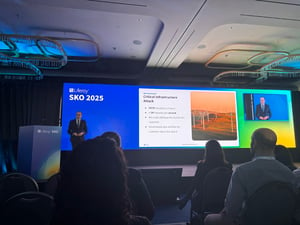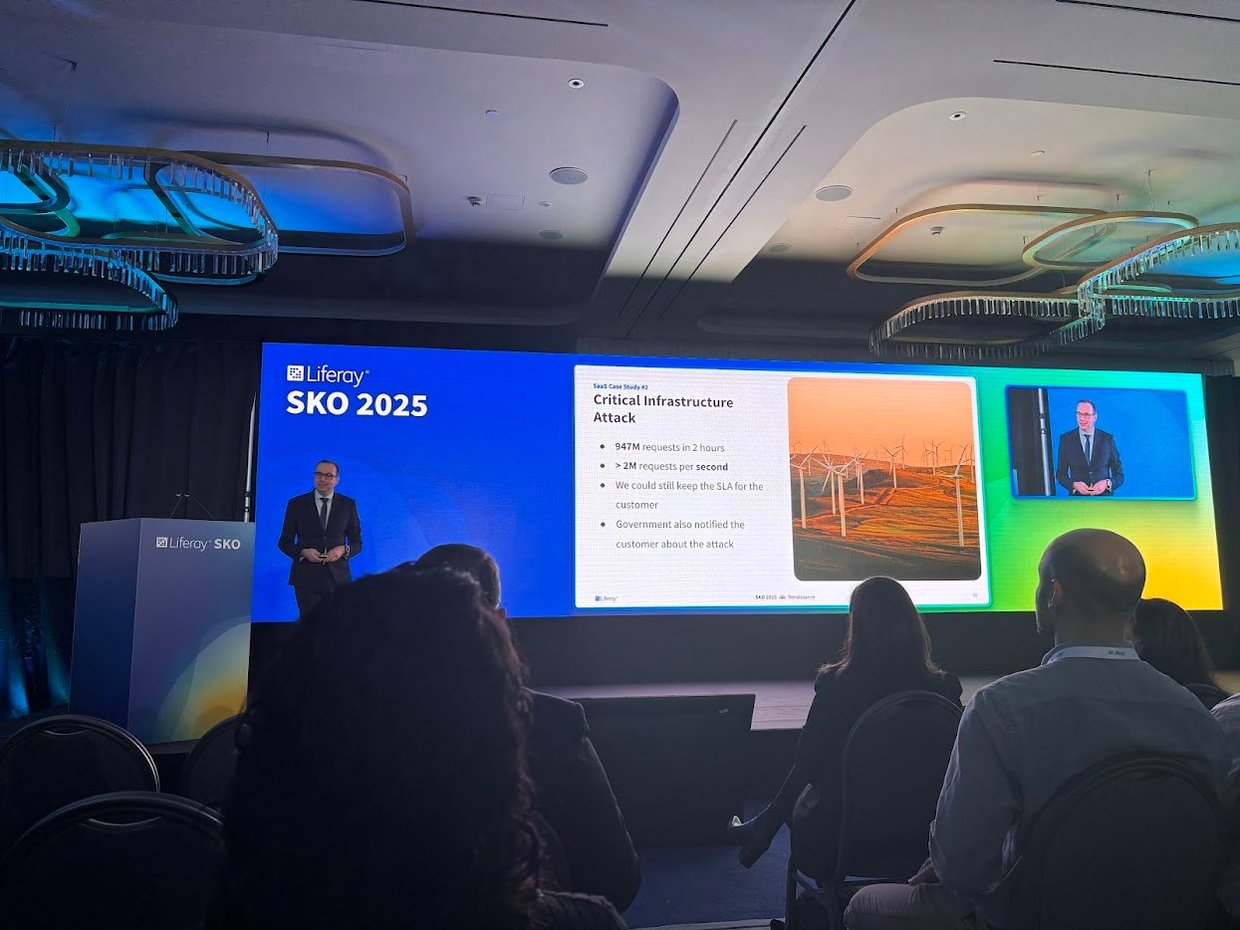Liferay, your digital experience platform
As a Liferay Gold Partner, ACA helps companies to create smooth and personalized digital experiences with Liferay’s robust Digital Experience Platform (DXP).

As a Liferay Gold Partner, ACA helps companies to create smooth and personalized digital experiences with Liferay’s robust Digital Experience Platform (DXP).
As a Liferay Gold Partner, ACA helps companies to create smooth and personalized digital experiences with Liferay’s robust Digital Experience Platform (DXP).
As a Liferay Gold Partner, ACA helps companies to create smooth and personalized digital experiences with Liferay’s robust Digital Experience Platform (DXP).
As a Liferay Gold Partner, ACA helps companies to create smooth and personalized digital experiences with Liferay’s robust Digital Experience Platform (DXP).
Liferay is more than a CMS. It is a powerful Digital Experience Platform (DXP) that enables companies to create and manage personalized digital experiences.


As a Liferay Gold partner, we help your company realize a smooth digital experience for both customers and employees. With Liferay DXP you can:
Starting from scratch or want to upgrade to the latest version? We handle the full lifecycle of your Liferay environment. We ensure seamless migrations, minimize downtime, and align every step with your business goals.

Our dedicated support teams are on call to resolve issues quickly, monitor performance, and make sure your platform stays secure and high-performing. We offer flexible SLAs tailored to your needs.
We help you navigate the complexities of Liferay licensing. We will help you with the right setup, avoid unnecessary costs, and make sure you’re always compliant.
Want to take control? Our hands-on trainings cover everything from creating and managing portals, pages, and users, to designing according to brand guidelines, developing portlets, and introducing custom plugins.
DXP functionality: Liferay offers a full suite of tools to build, manage, and optimize digital experiences across your organization: from portals and websites to complex applications.
Personalization: Deliver tailored content, services, and user journeys based on roles, behavior, or preferences. It will improve relevance and engagement for both customers and employees.
Omnichannel experience: Provide a smooth, consistent experience across web, mobile, and other digital channels, this all managed from one central platform.
Flexible integration: Liferay connects easily with your existing systems (CRM, ERP, identity providers, etc.) and enables smooth data flow and unified user experiences.

Our consultants are Liferay-certified professionals with years of hands-on experience across diverse industries and projects.

We have successfully delivered numerous Liferay projects. On time, on budget, and fully aligned with client objectives.

From strategy and design to development, deployment, and ongoing support. We offer a complete, worry-free Liferay solution.
Contact our Liferay experts today.

Contact our Liferay experts today.

Contact our Liferay experts today.

Contact our Liferay experts today.

To improve its customer journey and online presence, Attentia partnered with ACA Group to create a future-proof website. By replacing multiple fragmented platforms into one website, Attentia optimized their #OneAttentia experience. Customers can now easily access the right services while enjoying increased efficiency, stronger branding, and greater engagement.


Perform Europe is an EU-funded project aimed at rethinking cross-border performing arts by creating an online platform that connects performers and presenters across 40 countries. We helped bring this vision to life with a user-friendly, Firebase-powered platform that enables great collaboration and easy access to information, all while keeping costs low and maintaining easy management.




.jpg?width=560&auto=compress,webp&upscale=true)
.jpg?width=1180&auto=compress,webp&upscale=true)
UZ Brussels collaborated with ACA Group for a major digital upgrade. We successfully migrated more than 150 websites from UZ Brussel's on-premise Liferay 7.0 environment to the more explosive and secure Liferay SaaS platform. This transition creates a future-proof, scalable and highly secure digital infrastructure, allowing for replacement updates and minimal disruption for temporary ones.


To improve its customer journey and online presence, Attentia partnered with ACA Group to create a future-proof website. By replacing multiple fragmented platforms into one website, Attentia optimized their #OneAttentia experience. Customers can now easily access the right services while enjoying increased efficiency, stronger branding, and greater engagement.


Perform Europe is an EU-funded project aimed at rethinking cross-border performing arts by creating an online platform that connects performers and presenters across 40 countries. We helped bring this vision to life with a user-friendly, Firebase-powered platform that enables great collaboration and easy access to information, all while keeping costs low and maintaining easy management.




.jpg?width=560&auto=compress,webp&upscale=true)
.jpg?width=1180&auto=compress,webp&upscale=true)
UZ Brussels collaborated with ACA Group for a major digital upgrade. We successfully migrated more than 150 websites from UZ Brussel's on-premise Liferay 7.0 environment to the more explosive and secure Liferay SaaS platform. This transition creates a future-proof, scalable and highly secure digital infrastructure, allowing for replacement updates and minimal disruption for temporary ones.




From February 3 to 5, Liferay welcomed its global teams and partners to Athens for the Liferay Sales Kickoff (SKO) . During this annual event, Liferay presents its strategic direction and new features for the upcoming year. Liferay SKO is the place where sales, marketing, and partners come together to get inspired, share insights, discuss best practices, and discover new innovations within Liferay. ACA Group was also present to further discuss our strategic partnership and initiate several joint initiatives. Curious about the most notable announcements from Liferay Sales Kickoff 2025? Discover them below! * Disclaimer: The information and announcements mentioned below are based on Liferay's current insights and plans and are subject to change. New features and products may still be modified or delayed. Liferay PaaS Premium Security Liferay’s SaaS platform was already equipped with an advanced AI-driven firewall that has repeatedly proven its effectiveness. Through several case studies, Liferay demonstrated how this smart security system effortlessly blocks millions of attacks, all this without any intervention from partners or customers. Now, Liferay is bringing this proven security technology to the PaaS platform! With the Hyper Security Pack , PaaS users gain access to the same powerful protection that SaaS users already enjoy. What’s included? 🔹 ML DDoS Protection – Robots versus robots! The AI-driven DDoS protection from SaaS is now available for PaaS. 🔹 Blocking Bots – Advanced filters separate humans from machines and offer regional configuration options. 🔹 Scaling Insurance – Liferay automatically scales with your DXP at no extra cost. 🔹 Vulnerability Notifications – Immediate alerts for critical vulnerabilities, plus assistance with patching. 🔹 Vulnerability Report Processing – Submit your security report to Liferay and receive a prioritized list of action items. For SaaS users , this protection is included by default, while PaaS users can add this package as an add-on. Liferay Digital Days: training and events for customers Liferay is launching Digital Days ! These hands-on training sessions will introduce you to the latest features. But that’s not all, because Liferay is also taking the Customer Summit World Tour around the globe in 2025! These large-scale events will bring together partners and customers, providing the perfect opportunity to immerse yourself in the latest trends, insights, and possibilities within Liferay. Teaser Showcases demonstrate Liferay’s USPs ACA already has multiple Liferay environments to demonstrate the platform’s endless possibilities. Now, Liferay is making this even easier. With 8 Teaser Showcases, we can now present Liferay’s unique selling points (USPs) to potential customers in a clear and compelling way. These Teaser Showcases are the perfect complement to existing product trials and personalized demos, allowing customers to explore Liferay’s capabilities at their own pace. Liferay CMS: a small but powerful new addition The Liferay family is growing! Later this year, Liferay will launch a new Liferay CMS , a lighter alternative to the comprehensive Liferay DXP. While this smaller version won’t include all the features of Liferay DXP, it is the perfect solution for smaller projects that need a powerful and flexible CMS . Not all details are available yet, but ACA is closely following the developments. We are confident that Liferay CMS will be a valuable addition to our product portfolio. Liferay continues to grow Liferay continues to impress with its global growth! The partner network has now expanded to 400 partners worldwide , with a strong focus on the EMEA market . On a product level, Liferay is also making significant strides. In the Gartner Magic Quadrant , the platform continues to move upward toward the Leaders category, a testament to its strength and innovation. Additionally, Liferay is now ranked among the top three DXP Customer Choice platforms by Gartner, alongside Adobe and Pimcore. It’s a recognition of the trust and appreciation from users worldwide. Many more new features for Liferay DXP Liferay also introduced numerous new features for the Liferay DXP platform. Highlights include: Customizable Content Editor: Tailor the editor to fit your project’s needs. Advanced Export/Import: An improved import/export functionality with staging support and detailed error reporting. Camunda integration: Smooth two-way integration with Camunda for better workflow automation. Cloud Native Experience: Additional tools to run self-hosted Liferay DXP effortlessly on AWS, Google Cloud , or Azure . AI Wizard : A smart AI assistant that quickly creates pages, blogs, and media. Upload a sketch photo, and the wizard generates a complete page structure with fragments! Intelligent Search: Liferay’s search function gets a major upgrade. In addition to classic keyword search, there is now a powerful semantic search engine, fully customizable to your needs. 💡Curious about Liferay’s future plans? Check out their public roadmap at https://liferay.com/roadmap . Get started with the new Liferay updates? With these new developments, Liferay is taking its platform to the next level, making it more secure, user-friendly, and attractive than ever for both partners and customers. For ACA, it’s a fantastic opportunity to strengthen our market position and fully leverage these innovations. Want to know how these updates can benefit your organization? We’re happy to think along with you! Contact us!
Read more

ACA has been a Liferay Partner for many years, and is even the only Liferay Platinum Partner in Belgium. One of the advantages of this partnership is that we can view and review new products in a pre-release version. We recently received a pre-release version of the new Liferay DXP 7.2, which has just launched in early June. Here’s a short summary of what Liferay wants to achieve with this new version: In this new release Liferay aims to make it easier for the non-technical user to create a smooth customer experience . It realizes this by providing even more tools and updates to already existing tools. Another major upgrade is the fact that Audience Targeting is now included into the core of Liferay . By doing this, Audience Targeting and user segmentation has a better integration with all content building functionalities in Liferay. Liferay focuses on privacy with improvements to the Personal Data Erasure feature introduced in Liferay DXP 7.1. Modern Site Building There have been some vast improvements in the ways non-technical users can provide even better user experiences, something Liferay has been calling the Modern Site Building project since Liferay DXP 7.1. Its new features are related to Content Pages , Display Pages , Fragments , Navigation Menus and Pages Administration . Content Pages Next to an improved visual representation of the content pages, there are also several upgrades to the styling abilities for business users. Business users can now… adjust background colors, images, spacing, and more for sections in the Content Page. get an indicative view on the layout of a Content Page while creating them. Using the Section Builder on the right hand side, different kinds of layouts can be added to the Content Page. Several come out of the box, designed by Liferay itself, providing various amounts of columns. customize layouts on the fly and with regards to the specific context of a page. With the help of a bootstrap-like visual representation, the width of the columns can be easily adjusted by dragging the columns. It’s now also possible to provide a background color or even an image to the layout. adjust the number of columns, spacing, padding, margin and more thanks to the small options menu. To populate these layouts, Liferay provides several basic components called Fragments out of the box. These Fragments consist of several basic HTML components such as different kinds of headers, text fields, buttons, images, and cards (where some basic components are already grouped). There are also several predefined sections that combine layouts and components into more complex components, that are ready to be added to the page. Several types of headers, footers, banners, a highlight center and much more are provided! One thing that is very neat about all these components is that they can be linked to a Web Content Item. Any field of the content item can be used for the elements in the component. This allows the user to maintain the content in one place (the content management section of the site) and reuse it, or parts of it, in different content pages. Since Liferay DXP 7.1, business users were able to add widgets to Content Pages. A developer needed to create a Fragment that included the widget, which a business user could then configure. With the upgrade to Liferay DXP 7.2 however, business users are able to add any widget to any fragment directly, so they can make use of e.g. the asset publisher, web content display, alerts, wiki, blogs, … All of these updates are now performed within the context of the actual page. The styling and fixed components such as headers and footers and the behaviour of the Theme are directly applied to the Content Page. A business user can edit them while looking at it as end user, providing a more realistic experience of content editing. Display Pages All of the above changes for Content Pages are also valid for Display Pages, since they rely on the same building blocks. The major update here is the possibility for a developer to add support for Display Pages in custom entities. By ways of implementation, devs can provide the necessary options for webmasters to select specific Display Pages for the item. Webmasters will then see a dropdown option list to select which Display Page should be used. Fragments We have mentioned Fragments before as the building blocks to compose Content and Display Pages. They are typically created by a web developer and used by the webmaster. They are defined by an HTML block together with CSS and possibly JavaScript for dynamic behaviour. Liferay improved the Fragment Editor, which can be found in the Control Panel, to develop these Fragments. The Fragment Editor now also provides a form of code completion for the default lfr tag library. The Fragment can also be provided with a resource or a collection of resources that can be used in the Fragment. These are actually images that can be referenced by name either in the Fragment itself or in the supporting CSS (e.g. for the background image). The offline development for Fragments has also been made easier by Liferay through the Fragment Toolkit. This is a new npm tool to generate a Fragment module, which allows for offline development of a Fragment in an IDE of choice. The Fragment module can also be added to the codebase of the project and deployed on all environments. Navigation Menus Liferay DXP 7.1 introduced Navigation Menus to detach site navigation from the page hierarchy. Some improvements have been made in light of: moving pages in the hierarchy; selecting both public and private pages for the menu; adding back the ‘hidden’ option for pages to pages won’t be shown in any Navigation Menu; automatically adding a page to a Navigation Menu. Page Administration To easily navigate through pages while editing them, Liferay added the option to search and find Pages more easily through: a search bar in the page administration for search by text; the Page Navigation tool in the dockbar for Site administrators, which now provides a dropdown menu with search functionality; improvements in the visualizations of the page hierarchy and structure. Content Authoring While above updates concern the authoring of pages, there are also improvements to authoring content itself. One of these improvements now includes the possibility for webmasters to see an overview of the usages of the Content Item . These usages are determined by the Web Content Display and the Asset Publisher portlets as well as the usage in Fragments through Content Pages and Display Pages. So now, webmasters can clearly identify where in the Site any possible changes will impact the end user. Another improvement is that it is now easier for webmasters to preview the web content in all phases of the workflow and in different kind of contexts. Users can select different templates, see the preview of a Display Page Template and within a page the content item is already added. There have also been updates in terms of the content structure and templates. From Liferay DXP 7.2 and newer, it’s no longer required to select a template for a Content Item . As discussed above, Content Items can be used in Fragments for Content Pages and Display Pages. This means it’s possible that the Content Item is no longer represented by a template. Finally, the view for creating a structure and editing a Content Item has been updated . It now looks cleaner, with a clear separation between content and metadata. Audience Targeting With Liferay DXP 7.2, the Liferay core includes the Audience Targeting module. The Audience Targeting module allows for better and even more integration points with other core Liferay functionalities. Because of this change, a small migration process is necessary for current Audience Targeting customers . This should be a semi-automatic data migration process with preservation of existing segmentations. The Audience Targeting module itself has been moved outside of the Control Panel and can now be found under Site People Segments . Speaking of segments, it’s still possible to define segments based on rules. Rules can be created using User properties, Organization properties and Session properties. Much of this will sound familiar to the Audience Targeting customer. One nice adjustment, though, is that Custom Fields are now directly accessible from the menu. Customers using Liferay Analytics Cloud will also be happy to hear that from now on, the segments defined in Analytics Cloud can be reused in Liferay DXP . This means that segmentation in DXP can now be directly based on the user information or behavior and interests gathered in Liferay Analytics Cloud. Because of the integration of Audience Targeting into the Liferay core, the Liferay developers also provided several APIs to obtain information regarding user segmentation. This allows external applications that make use of Liferay content management capabilities to also apply user segmentation. Information that can be retrieved include the segments of a site, the segments to which a user belongs and even the users belonging to a segment. Personalized Experiences Using user segments in Content Pages is also available in terms of providing Personalized Experiences . When designing Content Pages, a webmaster can differentiate the sections and the content based on User Segments. Using the new Experience Administration option, these experiences can be created and managed through a simple UI. The order of the Personalized Experiences is important here as it signals priority. When a user belongs to multiple audiences and thus multiple experiences, the one with the highest priority (top-down) will be applied. Sadly though, this experience personalization is not applied to the Web Content Display portlet when present in the Content Page. This portlet will always show the same Content Item regardless of the selected experience. Content Sets Another novelty in light of Audience Targeting is the definition of Content Sets. This is a collection of Content Items that can be reused on the site pages using the Asset Publisher portlet . When creating a new Content Set, the content items that make part of it will be defined statically or dynamically by defining rules. You can differentiate those rules using user segments. Similar to the Personalized Experiences for Content Pages, Content Sets can contain different rules based on the user segments. In this context, they’re called Personalized Variations , but the functionality is pretty much the same. Although it is unclear if there is any priority applied here. These Content Sets are also available through the headless API, so they can be used outside of Liferay to obtain content variations based on the user segment. One oddity I came across when reviewing Audience Targeting, is that when User Segments are created, they are not available anymore for categorization of Content Items. In previous versions it was possible to use the User Segments as a sort of categorization for content items. Under ‘Metadata’, a new section called ‘User Segments’ would appear as soon as the user segments were defined. However, given the options of segmentation in Content Sets, Content Pages and Display Pages, Liferay probably has just omitted this usage of user segments. DMS Features Liferay’s Document Management capabilities have also gotten an upgrade. An integration with Google Docs is now available , so these types of documents can be created and edited within the Google context. The document is eventually stored in the Liferay DMS itself. You’ll need to create a Google Drive API for your project and provide that information in Liferay to start the integration with Google Docs. For all non-Google users, other significant updates have also been made to the ‘regular’ DMS features of Liferay, mainly concerning the sharing of files, file versioning and bulk editing. Sharing Files Documents and Media can now be shared with other users in the portal , even if they aren’t a member of the Site in which the item is defined. The receiving user won’t see anything of the Site in which the document is created. You can also grant them Comment or Update permissions instead of just a View permission. If you select the Allow the document to be shared with other users option, you’ll provide the receiving user the power to further share this document. The user that you share a Document with, is informed of this through the Notifications system of Liferay. You can locate any shared content from the User profile menu. No specific portlet to list all shared content is otherwise provided at this time. From a technical point of view it is important to know that no new document is created when sharing. Liferay chose to create a new table in the database which holds this sharing information between items and users. After sharing a document, it is also possible to revoke users’ access to it or manage the permissions from the information panel of the document under the Manage Collaborators link. File versioning Webmasters can now manually select a new version when editing a document . Under the tab Versioning , there’s a newly-added slider to activate the manual selection of versioning. The user can decide and provide a new major version or a new minor version, or can even select to have no version upgrade at all. For every selection, it is also possible to provide some comment to inform other users, or just for future reference, what adjustments have been made or why the selected option was chosen. When the activation slider is turned off, which is the default setting, Liferay applies its automatic versioning system. This system in turn has also received some updates and will now always play by the following rules: a major upgrade is created when the actual content has changed. a minor upgrade is created when the metadata has changed. there is no version upgrade in all other cases. e.g. only editing tags, categories, permissions or comments. Interesting to know is that this rule set can be extended as a Versioning Policy API has been introduced. By developing and deploying a custom component, the criteria can be adjusted. One still missing link for versioning is that these options are not available when editing with the image editor. Bulk editing The last major update in the Liferay DMS system is the availability to edit tags for documents in bulk . For now, editing tags is the only option, but Liferay promised to provide categorization as well in the near future. After selecting one or more Documents in the Documents Media Gallery, the Edit Tags options appears in the toolbar. This opens up a modal dialog where all options and shared tags are provided. By selecting Edit , webmasters manage only the listed tags, either deleting one or more or adding new ones for all selected documents. The Replace option will apply only the list of tags to all selected documents, which means all non-shared tags will be removed. This last one is very important to remember as it can cause some side effects where filters on tags will suddenly contain no more items. User Management We’ve already discussed Audience Targeting and some of its noticeable updates. However there have also been some improvements on individual user management. Mostly these are related to GDPR and user data management. In Liferay DXP 7.2, there are improvements in the feature to erase personal data and anonymize content . Personal data can also be exported and downloaded as a zip file that references the related assets. In the User Management section, these actions can still be found in the context menu. An Administrator is now presented with a clean dashboard to perform anonymization. The content can be scoped by the user’s personal site, regular site or instance. The content is shown in a hierarchical manner with filtering options. This provides the Administrator with context about the content items and where they are used. The Administrator can also selectively erase personal data. At the moment, only Documents Media and Message Boards support this new functionality. Exporting personal data is managed in the same way with a similar looking dashboard. When the export process is completed, an overview is shown of the different content items and are separately downloadable as a zip-file. In the process of auto-anonymization, the Administrator can now also see which applications contain data that support auto-anonymization. Extra: Artificial Intelligence Liferay also started embracing the power of AI. One example of this is the auto-tagging of images . This feature reduces the manual actions required by a webmaster and allows for rapid collection building. We’ll surely be seeing more AI functionalities in upcoming releases. The auto-tagging functionality is still at an early stage and therefore only English tags are supported. It is also disabled by default and needs to be activated by an Administrator from the Control Panel. This can however be performed on several levels: global, instance or site. Next to TensorFlow, which is the default provider, Liferay also supports Google CloudVision and Microsoft Cognitive Services. 🚀 Takeaway Liferay DXP 7.2 offers a ton of new possibilities. If you ask me, these are the things that really stand out in this new release: sharing documents; beautiful in-context editing of Content Pages; integration of Audience Targeting, with some caution as to how categorizing Content Items through Segments will happen in future releases; and linking Content Pages with Web Content Items. Are you just as excited about this new release as we are? Then why not join our fantastic team ? 🙂 Thanks for reading! Sources: https://community.liferay.com/blogs/-/blogs/web-experience-new-features-in-liferay-portal-7-2-b1 https://community.liferay.com/de/blogs/-/blogs/creating-personalized-experiences-with-liferay-7-2 https://community.liferay.com/de/blogs/-/blogs/liferay-portal-7-2-ce-alpha-1-release https://community.liferay.com/de/blogs/-/blogs/liferay-portal-7-2-ce-beta-1-release
Read more

The awkward moment when your login credentials do not work when you quickly need to make some changes, the embarrassment of not remembering the only administrator login when your colleague needs them. Your administrator credentials are lost . It has probably happened to quite a few of us. This can be very problematic when dealing with the credentials of the default administrator account in Liferay . This account, also known as test@liferay.com is often used on test and development Liferay installations. Losing the credentials for this account usually means losing all control over Liferay on these installations. "You should have documented these credentials somewhere!" (Random developer) Should have, could have… but didn’t. It is indeed true that maintaining complete and correct documentation can prevent these kind of situations . Having a project wiki helps tremendously in managing all the important information that needs to be shared. However, I am not writing this blog post to divulge all pro’s and con’s of a wiki to you. Our password is lost and we want it back, right now! Don’t panic. Besides of trying to get a hold of someone who does know the password or even installing a new Liferay, there are 2 fairly simple and straightforward methods to regain control over your account. Both however, depend on having access to Liferay’s database, so hopefully you are at least still able to log in to the database. The first method is to use Liferay’s built-in passwordEncrypted flag : Go to the user_ table in the database. Find the user you want to gain access to. Set the password_ field to some plain text password. Set the passwordEncrypted field to 0. Set the passwordReset field to 1. Restart Liferay! Log in. This will allow you to log in once with your own set password. Liferay will ask you to set a new password and that’s all. You have succesfully regained control! Your password will automatically become encrypted again in the database, so no need to worry about that. The second method is a bit more crude and relies on having a second Liferay instance at hand, but it works just as well: Go to the user_ table from the second instance, and copy the encrypted password of a user you know the password of. Paste this password into the problematic user’s password_ field of the user_ table from the initial Liferay instance. Restart Liferay! Log in. And again, great success! This method could be useful when there’s unauthorized eyes spying on you. Never will a password be visible in plain text. Got some Liferay troubles? As the only Platinum Partner in the Benelux, we're ready to help you out! {% module_block module "widget_cf1d144d-8279-481c-9ccd-60a9faf0cc03" %}{% module_attribute "buttons" is_json="true" %}{% raw %}[{"appearance":{"link_color":"light","primary_color":"primary","secondary_color":"primary","tertiary_color":"light","tertiary_icon_accent_color":"dark","tertiary_text_color":"dark","variant":"primary"},"content":{"arrow":"right","icon":{"alt":null,"height":null,"loading":"disabled","size_type":null,"src":"","width":null},"tertiary_icon":{"alt":null,"height":null,"loading":"disabled","size_type":null,"src":"","width":null},"text":"Our Liferay services"},"target":{"link":{"no_follow":false,"open_in_new_tab":false,"rel":"","sponsored":false,"url":null,"user_generated_content":false}},"type":"normal"}]{% endraw %}{% end_module_attribute %}{% module_attribute "child_css" is_json="true" %}{% raw %}{}{% endraw %}{% end_module_attribute %}{% module_attribute "css" is_json="true" %}{% raw %}{}{% endraw %}{% end_module_attribute %}{% module_attribute "definition_id" is_json="true" %}{% raw %}null{% endraw %}{% end_module_attribute %}{% module_attribute "field_types" is_json="true" %}{% raw %}{"buttons":"group","styles":"group"}{% endraw %}{% end_module_attribute %}{% module_attribute "isJsModule" is_json="true" %}{% raw %}true{% endraw %}{% end_module_attribute %}{% module_attribute "label" is_json="true" %}{% raw %}null{% endraw %}{% end_module_attribute %}{% module_attribute "module_id" is_json="true" %}{% raw %}201493994716{% endraw %}{% end_module_attribute %}{% module_attribute "path" is_json="true" %}{% raw %}"@projects/aca-group-project/aca-group-app/components/modules/ButtonGroup"{% endraw %}{% end_module_attribute %}{% module_attribute "schema_version" is_json="true" %}{% raw %}2{% endraw %}{% end_module_attribute %}{% module_attribute "smart_objects" is_json="true" %}{% raw %}null{% endraw %}{% end_module_attribute %}{% module_attribute "smart_type" is_json="true" %}{% raw %}"NOT_SMART"{% endraw %}{% end_module_attribute %}{% module_attribute "tag" is_json="true" %}{% raw %}"module"{% endraw %}{% end_module_attribute %}{% module_attribute "type" is_json="true" %}{% raw %}"module"{% endraw %}{% end_module_attribute %}{% module_attribute "wrap_field_tag" is_json="true" %}{% raw %}"div"{% endraw %}{% end_module_attribute %}{% end_module_block %}
Read more